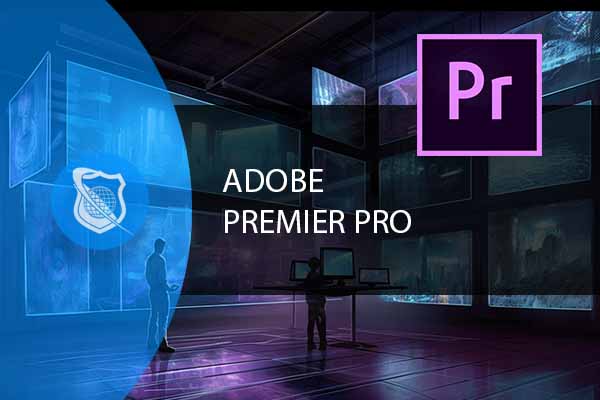Welcome to this comprehensive guide on Adobe Premiere Classes. With over two decades of hands-on experience in the video editing industry, I’ve had the privilege of witnessing its remarkable evolution. From the days of linear editing systems to the current non-linear digital platforms, Adobe Premiere Pro has consistently been a game-changer. This software has not only revolutionized the way we edit but also democratized the field, making high-quality video editing accessible to professionals and hobbyists alike. Adobe Premiere Classes serve as a gateway to this fascinating world, offering structured learning paths for all skill levels. Whether you’re just starting out and want to understand the basics, or you’re a seasoned editor looking to master advanced techniques, these classes are an invaluable resource. In this blog, we’ll explore 10 critical tips that can elevate your video editing skills, regardless of your experience level. So, let’s dive in!
Tip 1: Understand Your Workspace
The Importance of Layout
Adobe Premiere Pro offers an incredibly flexible and customizable workspace, designed to adapt to various editing needs and styles. One of the first steps in becoming proficient is to understand the layout of this workspace. The software is divided into several panels, each serving a unique purpose:
- Timeline Panel: This is where you’ll spend most of your time. It’s the canvas for your video editing, where you can arrange and rearrange clips, add transitions, and more.
- Program Monitor: This panel allows you to preview your edits in real-time. It’s essential for reviewing your work and making precise adjustments.
- Effects Controls: This panel is your toolbox for editing. From here, you can adjust various parameters like scale, position, and even apply effects to your clips.
Understanding the function and location of these panels is crucial. It not only speeds up your workflow but also enables you to utilize the software’s full potential.
Customization is Key for Adobe Premiere Classes
What sets Adobe Premiere Pro apart from many other video editing software is its high level of customization. You’re not stuck with a one-size-fits-all workspace; you can tailor it to fit your specific needs. For example, if you’re working on a documentary, you might need quick access to your audio tools, whereas a music video project might require a focus on visual effects.
Here’s how to customize your workspace:
- Rearrange Panels: Simply click and drag to move panels around. You can also dock them together or let them float freely.
- Save Layouts: Once you’ve set up a workspace that you find efficient, you can save it for future use. This is particularly useful if you switch between different types of projects frequently.
- Use Workspaces Presets: Adobe Premiere Pro comes with several preset workspaces that are optimized for different tasks like editing, color correction, and audio work. Don’t hesitate to start with these and then modify them as you see fit.
By taking the time to customize your workspace, you’re setting yourself up for a more efficient and enjoyable editing experience.
Adobe Premiere Pro Training
Unlock the power of Adobe Premiere Pro, the industry’s leading video editing software! Transform raw footage into cinematic masterpieces with time-saving tools and universal camera compatibility. Join our training course and unleash your creativity today!
Tip 2: Master Keyboard Shortcuts
Time is Money
In the fast-paced world of video editing, efficiency is not just a luxury; it’s a necessity. Keyboard shortcuts are the unsung heroes in this context, offering a quicker alternative to navigating through menus and panels. When you’re racing against the clock to meet client deadlines or make last-minute changes, these shortcuts can be a lifesaver.
Here are some commonly used Adobe Premiere Pro shortcuts that every editor should know:
- C: Razor Tool (for cutting clips)
- V: Selection Tool (for selecting clips)
- M: Add Marker (for marking points in your timeline)
- Space: Play/Pause (for previewing your edits)
By incorporating these shortcuts into your workflow, you can significantly speed up your editing process, allowing you to focus more on the creative aspects of your project.
Create Your Own
Adobe Premiere Pro goes a step further by allowing you to customize your own keyboard shortcuts. This is particularly useful for editors who have specific, repetitive tasks unique to their workflow. For example, if you frequently use a particular type of transition or effect, you can assign a custom shortcut to it.
Here’s how to set up your own shortcuts:
- Navigate to Keyboard Shortcuts: Go to
Edit > Keyboard Shortcutsto open the keyboard shortcut panel. - Search for a Command: Use the search bar to find the command you want to assign a shortcut to.
- Assign a Key: Click on the command and press the key you want to assign to it. If the key is already assigned to another command, you’ll be notified and given the option to overwrite it.
By taking the time to customize your shortcuts, you’re essentially building a personalized editing console that caters to your specific needs and habits.
Tip 3: Use Color Labels for Organization
Why Color Labels?
As your projects grow in complexity, organization becomes increasingly important. Adobe Premiere Pro offers a simple yet effective solution for this: color labels. These labels serve as visual cues, helping you quickly identify different types of media or sequences in your project. For example, you could use blue for interviews, green for B-rolls, and red for sound effects. This visual organization method is especially useful when you’re working on large projects with multiple team members.
How to Implement
Implementing color labels in Adobe Premiere Pro is straightforward:
- Select Your Clip: In the Project Panel, select the clip or sequence you want to label.
- Right-Click and Choose Label: Right-click on the selected clip and hover over the ‘Label’ option in the context menu. A submenu with different color options will appear.
- Choose a Color: Select the color you want to assign to the clip or sequence.
- Be Consistent: Once you’ve decided on a color-coding system, stick to it for all your projects. Consistency is key to effective organization.
You can even take this a step further by creating a legend or a guide, especially if you’re working with a team. This ensures that everyone is on the same page, making the editing process smoother and more efficient.
Tip 4: Utilize Adjustment Layers
What Are They?
Adjustment layers are a powerful feature in Adobe Premiere Pro that can significantly streamline your editing process. Think of them as filters that you can place over multiple clips in your timeline. Any effect or adjustment you apply to the adjustment layer will automatically be applied to all the clips beneath it. This is incredibly useful for tasks like color correction, grading, or even applying a specific look or mood across several clips or an entire sequence.
Adobe Premiere Pro Training
Unlock the power of Adobe Premiere Pro, the industry’s leading video editing software! Transform raw footage into cinematic masterpieces with time-saving tools and universal camera compatibility. Join our training course and unleash your creativity today!
How to Use
Using adjustment layers is remarkably straightforward:
- Create an Adjustment Layer: Go to the “New Item” button at the bottom of the Project Panel and select “Adjustment Layer.”
- Specify Settings: A dialog box will appear where you can specify the settings for the adjustment layer. Generally, you’ll want these settings to match those of your sequence.
- Drag and Drop: Once created, drag the adjustment layer from the Project Panel onto a video track above your clips in the Timeline. Extend or trim it to cover the clips you want to affect.
- Apply Effects: Now, any effect you apply to the adjustment layer will affect all clips beneath it. You can stack multiple effects on a single adjustment layer or use multiple adjustment layers for different sets of effects.
Tip 5: Master the Art of Transitions
The Basics
Transitions are not just decorative elements; they are storytelling tools. A well-placed transition can convey a change in time, mood, or location, or can simply provide a visual rest for the viewer. However, the key is to use them judiciously. Overusing transitions can make your video look amateurish and distract from the content.
Advanced Techniques
Adobe Premiere Pro offers a plethora of options for customizing transitions:
- Access Effect Controls: Double-click on the transition in the Timeline to open its settings in the “Effect Controls” panel.
- Adjust Duration and Timing: Here, you can change the duration of the transition and adjust the timing by dragging the transition handles in the Timeline.
- Add Keyframes: For more advanced control, you can add keyframes to your transition. This allows you to create dynamic, custom transitions that evolve over time.
- Preview and Refine: Always preview your transitions to make sure they serve the story and look as intended. Don’t hesitate to go back and refine them as needed.
Tip 6: Audio is Half the Picture
Importance of Good Audio
It’s a common saying in the film industry that “audio is half the picture,” and it’s absolutely true. Poor audio quality can distract the audience and undermine even the most visually stunning scenes. On the flip side, well-designed audio can elevate your video, adding emotional depth and realism.
Audio Editing Tools
Adobe Premiere Pro offers a robust set of tools for audio editing:
- Essential Sound Panel: This is a user-friendly interface where you can perform tasks like noise reduction, audio leveling, and even adding reverb or equalization.
- Track Mixer: For more advanced audio editing, you can use the Track Mixer to adjust levels and pan, or to add effects to entire audio tracks.
- Clip Mixer: This allows you to adjust the audio for individual clips, offering precise control over the audio levels.
- Markers and Keyframes: Use markers to identify key audio moments, and keyframes to create smooth audio fades or to adjust levels dynamically throughout a clip.
By taking the time to master Adobe Premiere Pro’s audio tools, you can ensure that your videos are not just visually compelling, but aurally engaging as well.
Tip 7: Multi-Camera Editing
Why It’s Useful
Multi-camera editing is a feature in Adobe Premiere Pro that allows you to edit footage from multiple camera angles simultaneously. This is an invaluable tool for projects like interviews, concerts, or any live events where multiple cameras are used to capture different perspectives. With multi-camera editing, you can switch between different camera angles in real-time during playback, making it easier to create a dynamic and engaging final product.
How to Set Up
Setting up a multi-camera sequence in Adobe Premiere Pro involves a few steps:
- Synchronize Clips: Import all the footage from the different cameras into your project. Then, synchronize these clips using either audio waveforms or timecodes.
- Create a Multi-Camera Sequence: Once the clips are synchronized, right-click and choose “Create Multi-Camera Source Sequence.” This will create a new sequence that combines all your camera angles.
- Switch Angles in Program Monitor: Open this multi-camera sequence in the Timeline and then enable the multi-camera view in the Program Monitor. Now, as you play back the sequence, you can switch between different angles by clicking on them in the Program Monitor.
- Fine-Tune: After making your initial selections, you can go back and fine-tune your edit, either by adjusting the cuts or by switching to different camera angles.
Tip 8: Dynamic Linking with Other Adobe Software
Seamless Integration
One of the major advantages of working within the Adobe ecosystem is the seamless integration between different software applications. Adobe Premiere Pro offers a feature called Dynamic Link, which allows you to effortlessly move between Premiere Pro, After Effects, and Photoshop without the need for time-consuming exports.
Practical Applications
- After Effects: Use Dynamic Link to send a clip or sequence from Premiere Pro to After Effects for more advanced visual effects work. Any changes made in After Effects will automatically update in Premiere Pro.
- Photoshop: If you need to create custom titles, graphics, or even edit still images within your video, you can use Dynamic Link to open these assets in Photoshop. Again, any changes made will be reflected in your Premiere Pro project.
- Audition: For advanced audio editing and mixing, you can send your audio clips to Adobe Audition, make your edits, and have them automatically update within Premiere Pro.
Tip 9: Properly Export Your Project
Export Settings
The final step in any video project is exporting, and understanding the various settings is crucial for delivering a high-quality product. You’ll need to make decisions about codecs, bit rates, and resolution based on your project’s needs and the platform where it will be viewed.
- Codecs: These are used to compress and decompress your video and audio files. Common video codecs include H.264 and ProRes.
- Bit Rates: This determines the quality of your video. Higher bit rates generally mean higher quality but also result in larger file sizes.
- Resolution: This is the dimensions of your video, commonly 1920×1080 for Full HD and 3840×2160 for 4K.
Presets
Adobe Premiere Pro offers a range of export presets tailored for different platforms like YouTube, Vimeo, and various mobile devices. These presets are a great starting point, but don’t hesitate to customize the settings to better suit your specific needs.
Adobe Premiere Pro Training
Unlock the power of Adobe Premiere Pro, the industry’s leading video editing software! Transform raw footage into cinematic masterpieces with time-saving tools and universal camera compatibility. Join our training course and unleash your creativity today!
Tip 10: Keep Learning and Practicing
Stay Updated
Adobe Premiere Pro is a software that’s continually evolving, with Adobe frequently releasing updates that include new features, improvements, and bug fixes. Staying updated with these changes is not just beneficial—it’s essential for anyone serious about video editing.
- Subscribe to Updates: Make sure you have automatic updates enabled or regularly check Adobe’s website for the latest versions.
- Read Release Notes: Whenever an update is released, Adobe provides release notes that detail what’s new, improved, or fixed. Make it a habit to read these to understand how the changes might impact your workflow.
- Test New Features: Don’t just read about new features—try them out. Create a test project where you can freely experiment without the pressure of a deadline.
Online Resources
The internet is a treasure trove of resources for learning Adobe Premiere Pro. From beginner guides to advanced tutorials, there’s something for everyone.
- Adobe’s Own Tutorials: Adobe offers a range of tutorials for Premiere Pro, from beginner to advanced.
- YouTube: Channels offer valuable tips and tutorials.
- Forums and Communities: Websites like Reddit and specialized forums offer a platform to ask questions, share knowledge, and get feedback from peers.
ITU Online’s Adobe Premiere Pro Training
Before we wrap up, I can’t stress enough how beneficial structured learning can be, especially when you’re aiming for professional-level skills. That’s why I highly recommend ITU Online’s Adobe Premiere Pro Training course. This course is a comprehensive package offering 19 on-demand training videos that span over 5 hours. The topics covered range from the basics all the way to advanced techniques, ensuring a well-rounded learning experience.
What sets this course apart is its free study program that includes 60 prep questions. These questions are designed to prepare you for any exams or practical tests you might face. But the real advantage here is that you’re not just getting exam questions; you’re also getting access to all the training videos and instruction, providing a holistic training experience.
Adobe Premiere Pro Training
Unlock the power of Adobe Premiere Pro, the industry’s leading video editing software! Transform raw footage into cinematic masterpieces with time-saving tools and universal camera compatibility. Join our training course and unleash your creativity today!
Conclusion
Mastering Adobe Premiere Pro is a journey that involves consistent practice and continuous learning. Whether you’re just starting out or looking to refine your skills, Adobe Premiere Classes are an invaluable resource. The software is incredibly powerful but also complex, and the best way to navigate this complexity is through education and practice. With the 10 tips outlined in this blog, you’re not just learning how to use a tool; you’re learning how to be a more effective storyteller. And in the world of video editing, that’s what truly counts.
Adobe Premiere Pro Video Editing FAQ
How do I get started with Adobe Premiere Pro for video editing?
basic editing techniques, and understanding the workflow. Begin by importing your media files into Premiere Pro, then drag them onto the timeline to start editing. Experiment with simple cuts, transitions, and adding text to get a feel for the software’s capabilities. Adobe also offers a range of tutorials for beginners to help you get started
What are the best practices for organizing projects in Adobe Premiere Pro?
Create bins to categorize your media files, sequences, and assets. Use meaningful names for your project files and sequences to easily locate them. Additionally, take advantage of color labeling for clips and sequences to visually streamline your project management
Can I improve editing speed in Adobe Premiere Pro?
Yes, improving your editing speed in Adobe Premiere Pro is possible by learning and using keyboard shortcuts for frequent actions, such as cutting, trimming, and applying transitions. Customizing your workspace to suit your editing style and project needs can also enhance efficiency. Utilizing the Proxy Workflow for editing high-resolution footage can significantly reduce lag and improve playback performance.
How do I achieve smooth transitions between clips in Adobe Premiere Pro?
Smooth transitions between clips can be achieved by using the built-in transition effects within Adobe Premiere Pro. Drag and drop a transition effect between two clips on your timeline. For more control and customization, use keyframes to animate the properties of the transition effect over time. Additionally, consider the pacing and rhythm of your edit to ensure transitions complement the overall flow of your video.
What are some advanced Adobe Premiere Pro tips for color grading?
adjust color temperature, exposure, contrast, and saturation. Utilize the Color Wheels for shadow, midtone, and highlight control. For more precise adjustments, work with the Lumetri Scopes. Applying LUTs (Look-Up Tables) can also quickly achieve a specific look or match colors between different shots. Finally, practice layering effects and using adjustment layers to apply color grading non-destructively.
You may also like:
Adobe After Effects vs Adobe Premiere Pro: Which Software is Best for Video Editing?
Which is easier Adobe Premiere or Final Cut Pro? Understanding the Key Differences
Understanding the Adobe Photoshop 2023 Plugins Folder: A Complete Guide
Adobe Audition vs Pro Tools: Which Software Wins for Audio Editing?

























